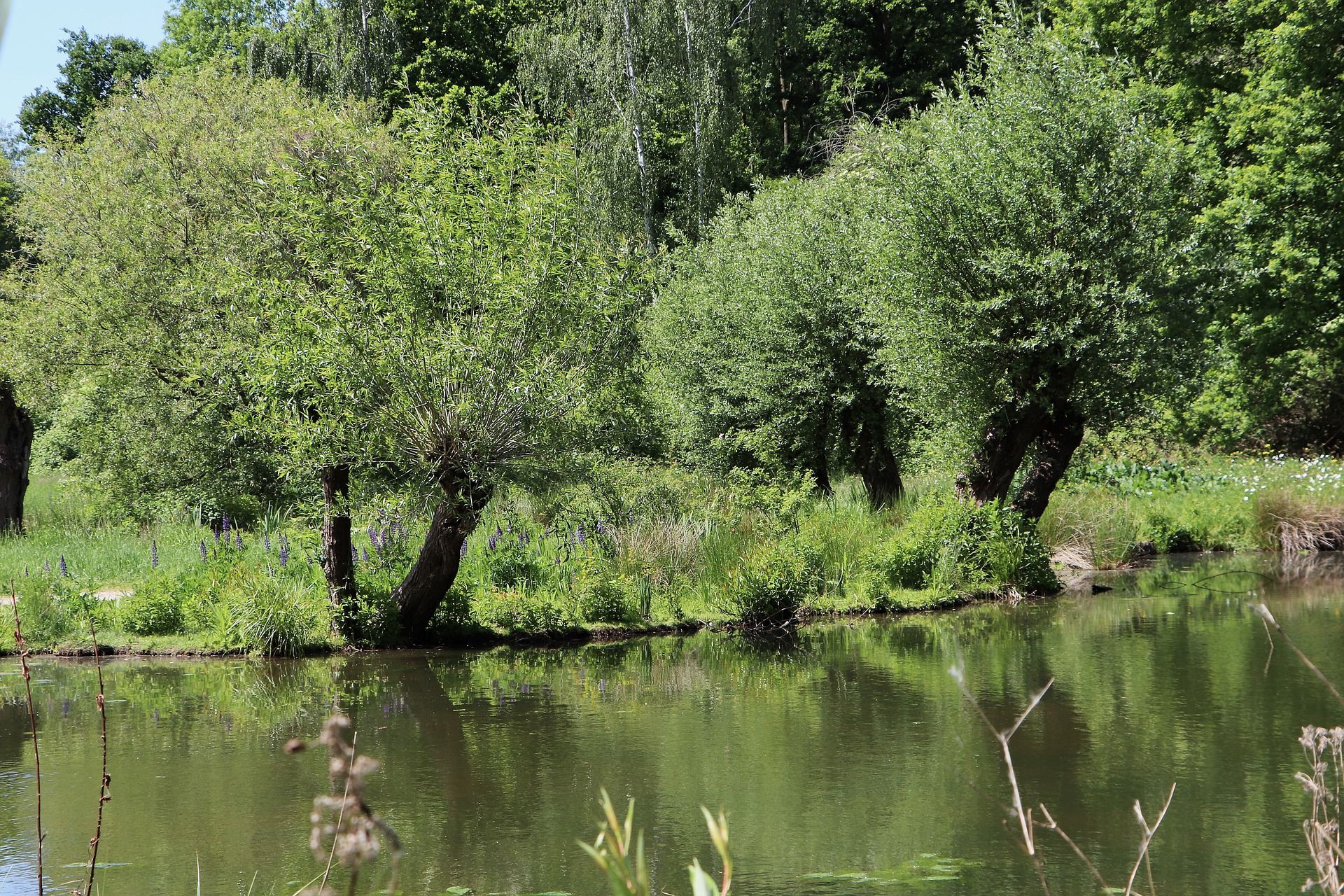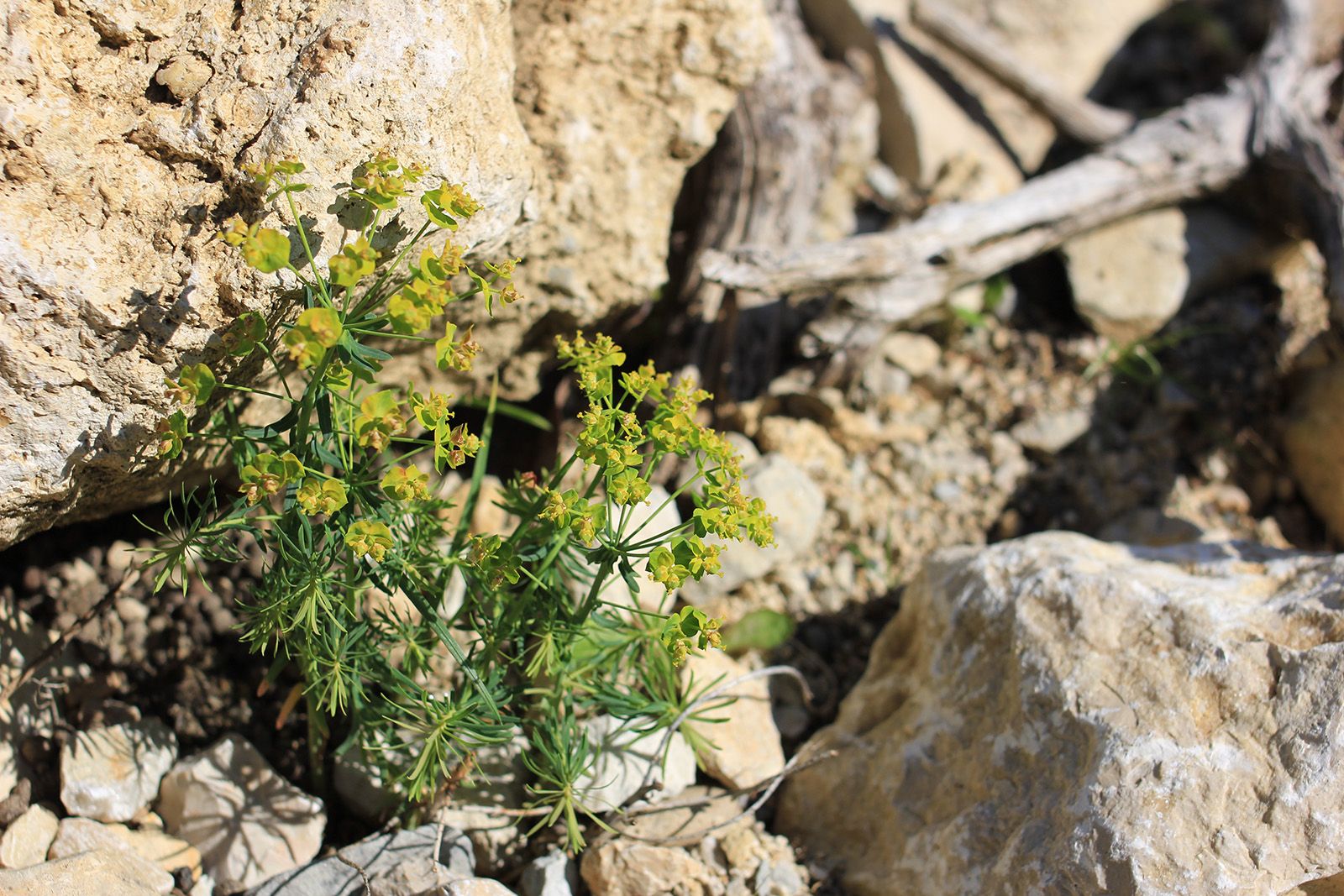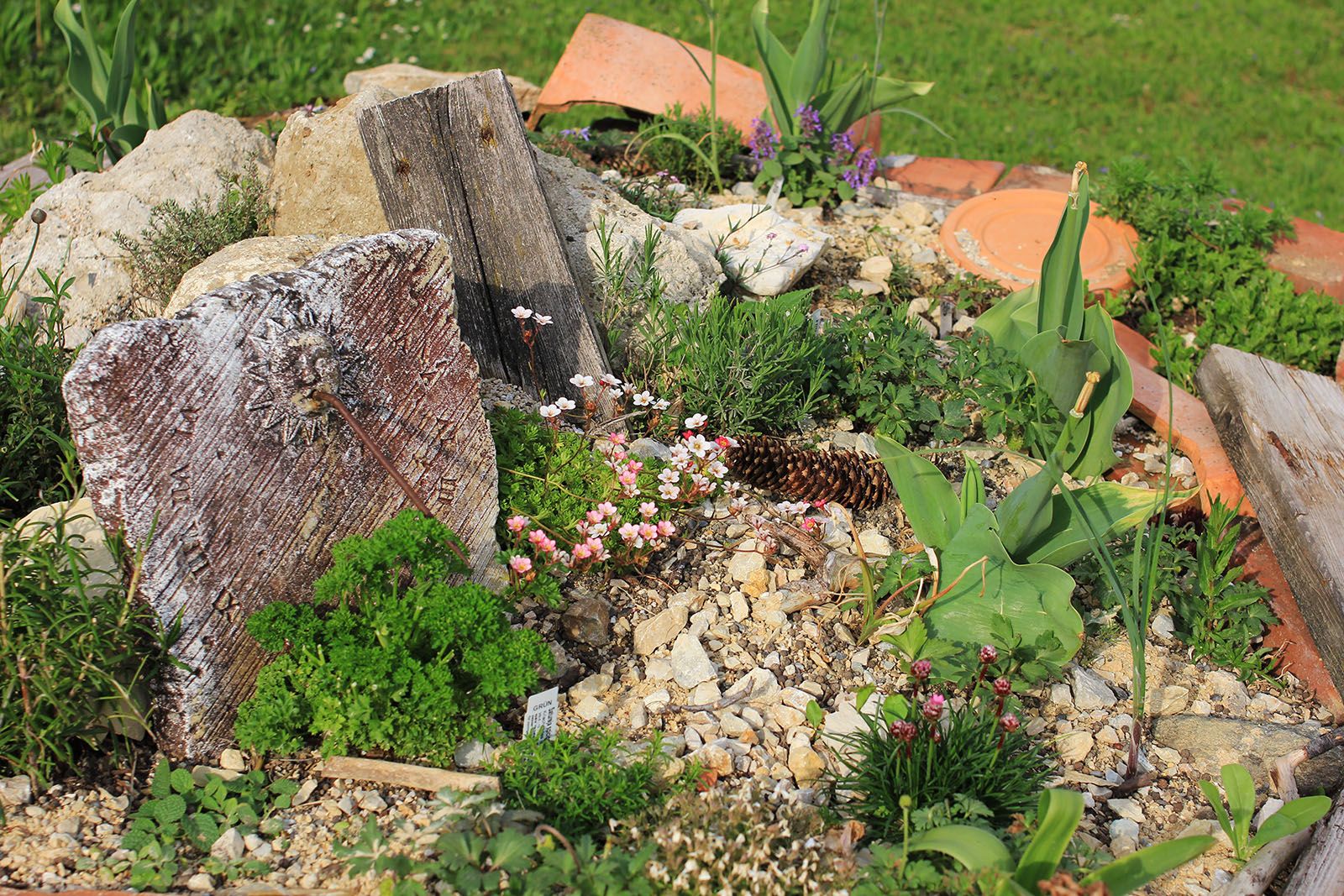The Natural Garden in times of climate crisis
The information and facts to this contribution come to a large extent from the booklet 1/21 nature & garden "climatic change, climatic crisis, climatic disaster", whose publisher is the nature garden registered association. Author of the booklet is the biologist Ulrike Aufderheide, and as Dr. Reinhard Witt, likewise biologist and president of the nature garden registered association in the preface of the booklet notes, the booklet is a masterly synopsis of the complex facts of this acute topic. Prepared in such a way that even non-scientists can understand it, and yet not simplified to such an extent that it only scratches the surface.
Loosely based on Albert Einstein, "You have to make things as simple as possible. But not simpler."
The best thing is, you read the whole booklet in the original, then you really know! :) Where you can get it, you will find below in the literature tips.
One thing is for sure, we have witnessed this in the drought summers of recent years: The principle of conventional garden management fails completely in times of climate crisis. If we do not support our gardens with elaborate irrigation systems remains not much more than dusty desert. 
It's easy to think: it's the more naturalistic, and more importantly, sustainable answer to select plants that are naturally relatively drought resistant than to come up with elaborate irrigation systems for drought-prone species.
So much for introductory words - now it's time to get specific. What can we actually do in our gardens when it comes to counteracting development?
The nature garden as a building block in a larger strategy.
We fortunately have a great many heat-loving and drought-tolerant species in our native flora that cope quite well with heat disasters. And we can also draw on southern or southeastern European wild plant species. We probably have to. They, unlike species of distant continents, have at least at times in history shared a common evolution with our animal world. A point, which is often not completely clear, but crucial for the functioning of our ecosystems.That can be understood calmly as small side blow on the conventionally working GaLa enterprises, which work hardly or in any case much too little with native kinds. Which must have again with the operational training conditions of this occupation to do. The future GaLa builders learn paving, building stairs, erecting walls. Botany and ecological connections understand, is probably taught, if one looks at the result of most garden planning, under far run.
If someone nevertheless means, he must set now on Asian, African or Australian kinds, then this does not work usually. These plants are often a "no-go" for our wildlife. Their flowers may work for honeyeaters (Australia, see picture below) or hummingbirds (America), where evolution has also evolved toward flower-pollinating birds. Our animal world generally has little to do with them.

Also, with these plants, we never know exactly what will happen when they become established in our landscape. There are plenty of examples where the experiment went badly and we ended up with invasive species. Such experiments can then no longer be turned back.
There will be a separate post on the topic of "invasive species" at some point. To treat the topic here would fit, since the climate problem is closely connected with the problem of the Neobiota, the immigrated species, but as an insertion the topic is here in any case too extensive.
Back to our natural gardens. Here beauty and usefulness are combined. This is not a problem, on the contrary, it has always been the principle, even the pioneers of natural gardening one hundred years ago.
Semi-open landscapes, with a mixture of trees, shrubs, tall shrubbery and short-cropped lawns are perceived by many people as particularly beautiful. And what is perceived as harmonious is also good for our well-being. These images of semi-open natural sites have also been implemented in English landscape parks for centuries.

We can also implement this principle in our gardens, if of course on a smaller scale, in the most natural way possible, creating ecosystems that are largely self-regulating. In the natural garden, we also have the unique opportunity to create sites that have been eradicated from our formerly diverse landscape in the spirit of land consolidation.
Wet sites were drained, dry ones irrigated, acidic ones were limed and lean ones fertilized. Except in protected areas, we now find mainly unspecialized commons in our landscape.
In the natural garden, we can counterbalance this trend. We can work with lean, "poor" soils and cultivate a variety of colorful wildflowers there. These not only have the advantage of providing a perfect buffet for insects, but also, after an extreme drought summer, they can regenerate from their rosettes and seed bank. Evolution has equipped these "dry plants" to handle such extreme situations.

Plus, we don't have a lot of work to do with them. Once they are properly rooted, after about two years, it takes little maintenance. The usual field weeds don't like it much on such lean sites, so weeding is minimal. As I said, after a certain period of establishment.
.
How exactly the establishment of such a hotspot lean site works, I have described in the article "Creating a lean site", which I link here.

Which plants are particularly climate resistant?
There we just have to look around in the warmest areas in the country. So in the Rhine, Moselle and Nahe valleys. Here we already have a climate that can be expected throughout Germany in the future.If we are looking for such plants for our garden, we should look as close as possible to our location for appropriate extreme locations. In Upper Swabia, for example, this would be the dry grasslands and rocky slopes on the Swabian Alb. Then the chance is highest that the 'associated' animals are already there or migrate with them.
And as already mentioned above: the south or southeast European wild plants offer a wide field with which we can experiment here in Central Europe quite safely.
Perennials and grasses can be tested more easily, they develop very quickly, and the reaction is quickly foreseeable. With woody plants, before you plant, you should think carefully about which ones, in all likelihood, will cope best with drought and higher temperatures.
A list of climate-resistant wild plants, both perennials and shrubs and trees can be found attached to the post below.
Scientific trials are currently underway on both wild perennials and so-called "climate trees," which of course have not been completed. These experiments are also partly based on plant species of the Eemian, the last warm period on our earth more than one hundred thousand years ago.
Fascinatingly, we can find fossilized leaves of oak, sloe, wild apple and hawthorn from that time, which differ little from our species today.
Literature
Natur & Garten 01/21, Fachmagazin des Naturgarten e.V. Autorin: Ulrike AufderheideWitt, Reinhard und Katrin Kaltofen: Klimawandel–Fluch oder Chance, NaturGarten Verlag 2020
Steffens, Dirk & Habekuss, Fritz: ÜberLeben, Zukunftsfrage Artensterben, penguin Verlag 2020
| Name | Name | Wuchshöhe | Blütenfarbe | Blühzeitpunkt |
| Edle Schafgarbe | Achillea nobilis | M | weiß | H-S |
| Rundköpfiger Lauch (Schnittlauch) | Allium schoenoprasum | N | violett | H-S (Geophyt) |
| Felsen-Steinkraut | Allyssum saxatile | N | gelb | F |
| Ochsenzunge | Anchusa officinalis | M | violett | H-SP |
| Färberkamille | Anthemis tinctoria | M | gelb | H-SP |
| Wundklee | Anthyllus vulneraria | N | gelb D | H |
| Berg-Aster | Aster amellus | N-M | blau | S-SP |
| Heil-Ziest | Betonica officinalis | M | pink | H-SP |
| Ochsenauge | Buphthalmum salicifolium | M | gelb | H-S |
| Rundblättriges Hasenohr | Bupleurum rotundifolium | H | grünlich | H-SP, einjährig |
| Bergminze | Calamintha nepeta | M | blasslila | S-SP |
| Knäuelglockenblume | Campanula glomerata | M | blauviolett | H-S |
| Acker-Glockenblume | Campanula rapunculus | M | blauviolett | H-S |
| Rundblättrige Glockenblume | Campanula rotundifolia | M | blauviolett | H-SP |
| (Schmalblättrige) Wiesen-Flockenblume | Centaurea jacea (spec. angustifolia) | M | rosa-violett | H-SP |
| Kornblume | Centaurea cyanus | M | kornblumenblau | H-S, einjährig |
| Wegwarte | Cichorium intybus | M | himmelblau | H-SP |
| Karthäuser-Nelke | Dianthus carthusianorum | N-M | purpur D | H-SP |
| Pfingst-Nelke | Dianthus gratiopolitanus | N | rosa | H |
| Stein-Nelke | Dianthus sylvestris | N-M | rosa | H-S |
| Gewöhnlicher Natternkopf | Echium vulgare | M-H | blau-violett | H-S, zweijährig |
| Wegerich-Natternkopf | Echium plantagoides | M | blau-violett | H-SP, einjährig |
| Zypressen-Wolfsmilch | Euphorbium cyparissias | N | gelb | H-S |
| Steppen-Wolfsmilch | Euphorbium seguierana | N | gelb | F |
| Blaugrünes Labkraut | Galium glaucum | M | weiß | H-S |
| Echtes Labkraut | Galium verum | M | gelb D | H-S |
| Blutstorchschnabel | Geranium sanguineum | N | purpurrosa | H |
| Sonnenröschen | Helianthemum nummularium | N | gelb | H-S |
| Kleines Habichtskraut | Hieracium pilosella | N | gelb | H-SP |
| Hufeisenklee | Hippocrepis comosa | N | gelb D | H-S |
| Johanniskraut | Hypericum perforatum | M | gelb | H-SP |
| Ysop | Hyssopus officinalis | M | blauviolett | S-SP |
| Deutscher Alant | Inula germanica | M | gelb | S |
| Färberwaid | Isatis tinctoria | H | gelb | H-S |
| Acker-Wachtelweizen | Melampyrum arvensis | M | gelb-rot | H-SP |
| Blauer Lattich | Lactuca perennis | M | blassviolett | H |
| Österreichischer Lein | Linum austriacum | M | blau | H-S |
| Stauden-Lein | Linum perenne | M | himmelblau | H-SP |
| Dornige Hauhechel | Ononis spinosa | M | zartrosa | H-SP |
| Wilder Dost | Origanum vulgare | M | violett D | H-SP |
| Echter Haarstrang | Peucedanum officinalis | H | gelb | S-SP |
| Frühlings-Fingerkraut | Potentilla verna | N | gelb | F |
| Echte Schlüsselblume | Primula veris | N | gelb | F |
| Küchenschelle | Pulsatilla vulgaris | N | violett | F giftig! |
| Gelbe Resede (Gelber Wau) | Reseda lutea | M | gelb D | H-S |
| Steppen-Salbei | Salvia nemorosa | M | violett | H-S |
| Muskatellersalbei | Salvia sclarea | M | blassviolett D | H-S |
| Wiesensalbei | Salvia pratensis | H | lila D | H-S |
| Kriechendes Seifenkraut | Saponaria ocymoides | N | zartrosa | H |
| Knöllchensteinbrech | Saxifraga granulata | N | weiß | H |
| Graue Skabiose | Scabiosa canescens | M | hellblau | S-SP |
| Scharfer Mauerpfeffer | Sedum acre | N | gelb | H-S |
| Weißer Mauerpfeffer | Sedum album | N | weiß | H-S |
| Dach-Hauswurz | Sempervivum tectorum | N | weiß | H-S |
| Nelken-Leimkraut | Silene armeria | M | rosa | H-SP, einjährig |
| Wild-Tulpe | Tulipa sylvestris | N | gelb | F Geophyt |
| Name | Name | Wuchshöhe | Blüten-/Fruchtfarbe | Blühzeitpunkt |
| Feld-Ahorn | Acer campestre | 5-10 m, kompakte Krone | gelbgrün/braun | F |
| Kornelkirsche | Cornus mas | 5-8 m, essbare Früchte | gelb/rot | F |
| Wildapfel | Malus sylvestris | 5-10 m, kleinkronig, nicht essbare Früchte | Weißrosa D/rotgelb | F |
| Wildbirne | Pyrus pyraster | 5-10 m, kleinkronig, nicht essbare Früchte | weiß/gelb | F |
| Mehlbeere | Sorbus aria | 5-10 m, Früchte und Herbstlaub attraktiv | weiß/rot | F |
| Name | Name | Wuchshöhe | Blütenfarbe/Fruchtfarbe | Blühzeitpunkt |
| Felsenbirne | Amelanchier ovalis | 2-3 m, essbare Früchte, schönes Herbstlaub | weiß D/blau | F |
| Berberitze/Sauerdorn | Berberis vulgaris | 2-3 m, essbare Früchte, stark dornig | gelb/rot | H |
| Behaarter Ginster | Genista pilosa | 0,4 m, Zwergstrauch für trockenheiße Lagen | gelb/braun | F |
| Färber-Ginster | Genista tinctoria | 1 m, Sommerblüte! | gelb/schwarz | S |
| Strauchwicke | Hippocrepis emerus | 1-2 m,gefiedertes Laub, heimisch im SW | gelb/braun | F |
| Liguster | Ligustrum vulgare | 1-4 m, L. lodense = Zwerg- form, halbimmergrün, Früchte leicht giftig, trockenresistent, auch im HS |
gelbweiß/schwarz | H |
| Mispel | Mespilus germanica | 2-5 m, Früchte nach Frost essbar, roh oder gekocht | weiß/orange | H |
| Schlehe (Schwarzdorn) | Prunus spinosa | 3-5 m, 'Wildobst' nach Frosteinwirkung zur Zubereitung von Marmelade und Likör geeignet | weiß/tiefblau | F |
| Kreuzdorn | Rhamnus cathartica | 2-3m, dornig | gelbgrün/schwarz | H |
| Essig-Rose | Rosa gallica | 1 m, dornig | rosa D | H |
| Wein-Rose | Rosa gallica | 1 m, dornig | rosa D | H |
| Wolliger Schneeball | Viburnum lantana | 3-5 m, große Blüten- und Fruchtdolden | weiß rot/schwarz |
H |









